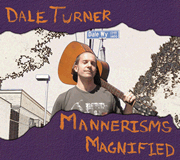
|
 |
|
|
|
|
|
|
I'm a HUGE Jimi Hendrix fan, but I wasn't always. When I was a closed-minded metalhead in my mid-teens (I started playing at age 15), I was only capable of worshipping rockers who always demonstrated ultra-precise technique and flawless intonation. How could I possibly appreciate something raw, beautiful, and totally spontaneous? (DUH!) Meanwhile, at that tender age, when I started reading guitar interviews conducted with some of my faves (Steve Vai, Joe Satriani, Eric Johnson, etc.), I noticed they always praised Hendrix. At that time, I just didn't get it! Well... Around 1989 or 1990, I finally saw a videotape of Hendrix playing live (possibly Jimi Plays Berkeley May 1970?). That was all it took. Never before had I witnessed such a stream-of-consciousness performance style. He literally struck me as a guy who was 100% capable of expressing whatever he wanted to on his instrument—in total uninhibited fashion—yet his technique seemed so natural, I almost couldn't imagine him ever practicing the darned thing! Total purity as an improviser, showman—to say nothing of his songs! I was blown away, and I have since learned a zillion of Hendrix's tunes, solos, etc. Perhaps even more so than his unbridled leadwork, the Hendrix RHYTHM GUITAR STYLE really captivated me. A year or two after I was “hipped” to his revolutionary playing approach, I began dissecting “Little Wing,” “Castles Made of Sand,” “Bold As Love,” “Wind Cries Mary,” and others. At some point, I reached the following realization: Hendrix would often strike a chord, hold it down while he was singing, then “fill in” behind his vocal phrases with some kind of chordal sounding fill. Virtually all of these beautiful “double-stop/chord partial” fills were two-note pentatonic ideas (both notes sounding simultaneously) conveniently oriented near basic chord shapes. Any rudimentary major chord fingering—like “C,” for example—would always be “colored” using pitches from the C Major Pentatonic scale (C-D-E-G-A), with the frequent addition of the “sus4” (as it relates to a “C” chord, the note “F”). Similarly, a “Cm” chord would receive the C Minor Pentatonic (C-Eb-F-G-Bb) treatment, with the frequent addition of the “sus2” (as it relates to a “Cm” chord, the note “D”). Regardless of the song's chord progression, the appropriate pentatonic scale—again, using pentatonic scales in parallel with every passing chord—would be “plugged in.” For instance: In “Little Wing,” the song's chord sequence might be treated as follows (with the aforementioned “sus” notes thrown in): Em (E minor pentatonic)-G (G major pentatonic)-Am (A minor pentatonic)-Em (E minor pentatonic)-Bm (B minor pentatonic)-Bb (Bb major pentatonic)-Am (A minor pentatonic)-G (G major pentatonic)-F (F major pentatonic)-C (C major pentatonic)-D (D major pentatonic) So I realized: “If I had a fairly large arsenal of major and minor pentatonic ‘chord partial licks’ under my belt, I could improvise within this style reasonably well over any progression!” Also, by showing students some of these types of licks in relation to standard barre chord shapes, I discovered they could do pretty well themselves (without having to really know the fret board, or chord/scale theory). So... For this week's lick, I'm presenting a four-bar string of C major pentatonic HENDRIX-STYLE figures, all arranged in a manner that sounds semi coherent unaccompanied. The notes used in the first two measures are all grouped in the vicinity of the garden-variety “C” barre chord (the “six-note” version), with it's root located on the 6th string (8th fret). Measure 3 uses doublestops found within the C major pentatonic/A minor pentatonic fingering we all know and love (sort of relates to a chord shape too—try moving a garden-variety “open G” chord up to the 8th fret to make “C”). The final bar stems from the standard “C” barre chord with it's root located on the 5th string (3rd fret). I'll slap a “minor pentatonic” Hendrix-type figure up here next week! Keep in mind these types of licks can also work in a “soloing” context (à la “Wind Cries Mary,” Stevie Ray Vaughan's “Lenny,” etc.). In addition, these types of figures are a studio musician's bread and butter, when it comes to laying down potent (yet tastefully understated) rhythm guitar riffs on the fly (way more effective—in most cases—than strumming full-blown chords, or unloading triadic “chord stabs”). Hope you dig it! (*You can hear the lick FAST by clicking HERE*) (*You can hear the lick SLOW by clicking HERE*)
To
help support this site's free online guitar lessons, please check
out my brand-new “full band” album of original compositions,
MANNERISMS
MAGNIFIED (now available through
CDBABY.com,
iTunes
and AMAZON.COM),
featuring me performing all the instruments (voices, guitar, bass,
real acoustic drums, piano, accordion, and mandolin). I also produced,
arranged, engineered, and did all the artwork/illustrations—intimate
audio AND visual, lol! (Details can be seen in my YouTube:
ALBUM PREVIEW/documentary.)
I’d love to hear your thoughts! Thank you :)
|
||
|
***
Click HERE for more of Dale Turner's PsYcHo
LiCkS! ***
|
|||
|
|
|||